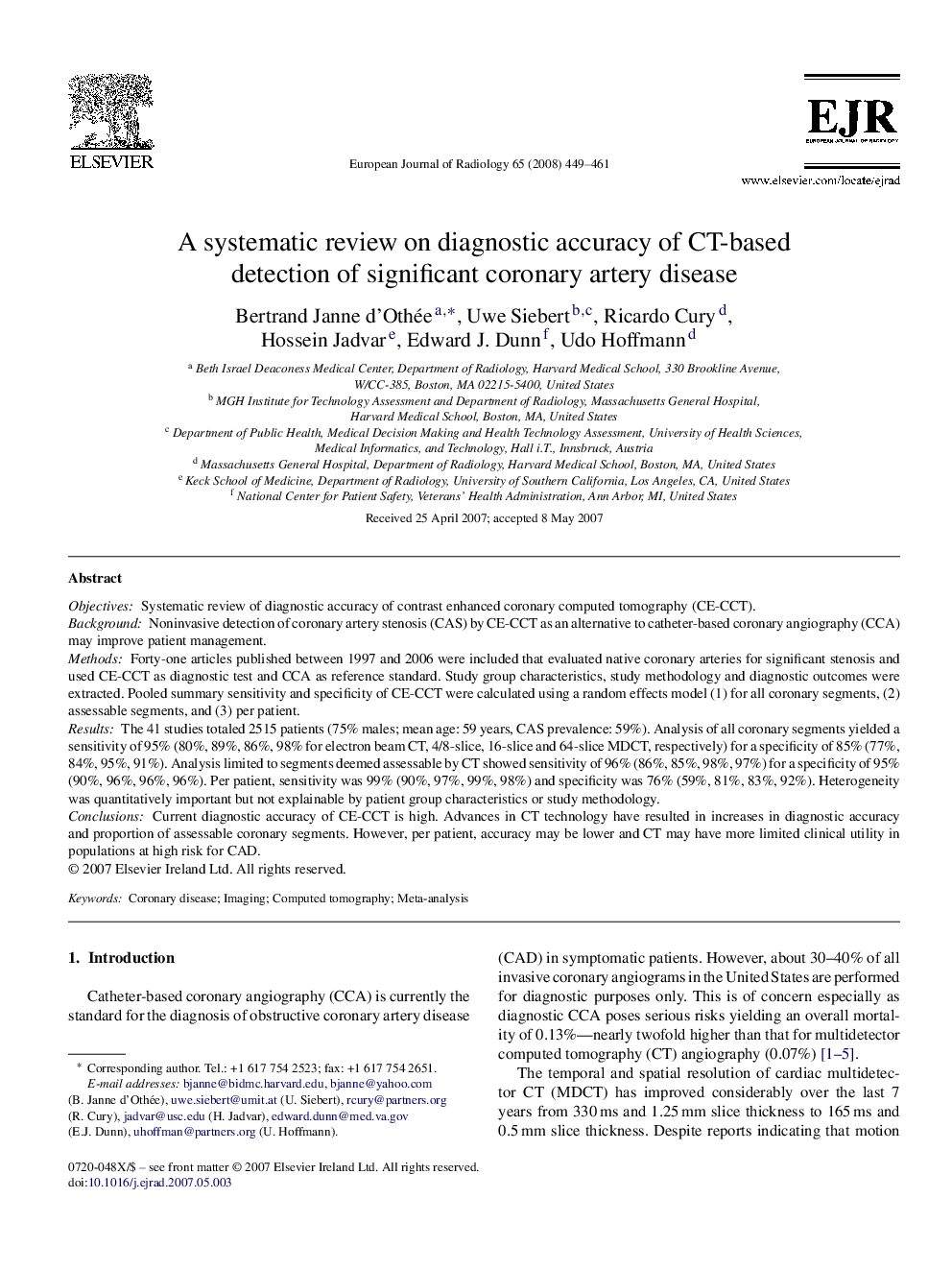| Article ID | Journal | Published Year | Pages | File Type |
|---|---|---|---|---|
| 4228136 | European Journal of Radiology | 2008 | 13 Pages |
ObjectivesSystematic review of diagnostic accuracy of contrast enhanced coronary computed tomography (CE-CCT).BackgroundNoninvasive detection of coronary artery stenosis (CAS) by CE-CCT as an alternative to catheter-based coronary angiography (CCA) may improve patient management.MethodsForty-one articles published between 1997 and 2006 were included that evaluated native coronary arteries for significant stenosis and used CE-CCT as diagnostic test and CCA as reference standard. Study group characteristics, study methodology and diagnostic outcomes were extracted. Pooled summary sensitivity and specificity of CE-CCT were calculated using a random effects model (1) for all coronary segments, (2) assessable segments, and (3) per patient.ResultsThe 41 studies totaled 2515 patients (75% males; mean age: 59 years, CAS prevalence: 59%). Analysis of all coronary segments yielded a sensitivity of 95% (80%, 89%, 86%, 98% for electron beam CT, 4/8-slice, 16-slice and 64-slice MDCT, respectively) for a specificity of 85% (77%, 84%, 95%, 91%). Analysis limited to segments deemed assessable by CT showed sensitivity of 96% (86%, 85%, 98%, 97%) for a specificity of 95% (90%, 96%, 96%, 96%). Per patient, sensitivity was 99% (90%, 97%, 99%, 98%) and specificity was 76% (59%, 81%, 83%, 92%). Heterogeneity was quantitatively important but not explainable by patient group characteristics or study methodology.ConclusionsCurrent diagnostic accuracy of CE-CCT is high. Advances in CT technology have resulted in increases in diagnostic accuracy and proportion of assessable coronary segments. However, per patient, accuracy may be lower and CT may have more limited clinical utility in populations at high risk for CAD.
